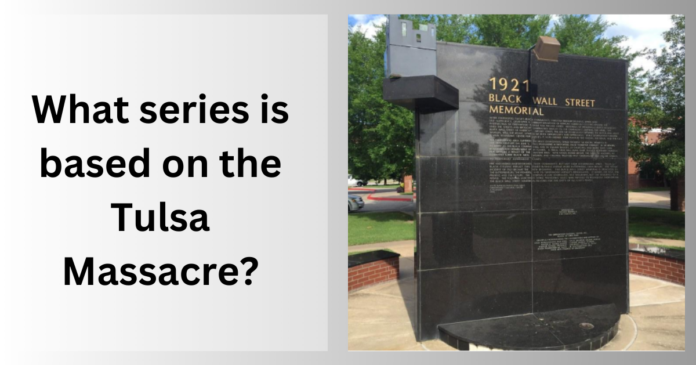Tulsa Massacre: An Omitted Episode in History :
Amidst the annals of history, the cataclysmic occurrence known as the Tulsa massacre unfurled its grim tableau in the year 1921, shrouding myriad lives in its somber embrace. The chronicles of May 31st, 1921, remain veiled in an enigmatic shroud, concealing the intricacies of the events that transpired during that epoch. The Tulsa massacre is one of the most horrific racial killings that happened in America. The massacre happened when white supremacist terrorism was in motion.
What events led to the Massacre?
Nestled within the confines of Tulsa, Oklahoma, thrived the enigmatic Greenwood enclave, an exuberant tapestry woven with an array of enterprises meticulously stewarded by individuals of African descent. This thriving epicenter, a testament to their mettle, burgeoned with vitality and economic vibrancy, painting a portrait of community fortitude.The place was a thriving and prosperous region so much so that it was known as “The Black Wall Street”.
A profound enigma in its own right, Greenwood stood as an exception amidst the backdrop of historical turbulence. A bastion of prosperity, it flourished even as the ominous specter of the Ku Klux Klan loomed over Oklahoma, casting shadows of prejudice and animosity. In the wake of the “Red Summer of 1919,” a harrowing epoch marked by a series of racially-motivated atrocities across the nation, Greenwood remained steadfast, an oasis of growth amidst a desert of adversity.
Read More at : https://nexusnewsletter.com/category/news/
On 30 May 1921, a 19-year-old boy named Dick Rowland, a black shoeshine man entered the elevator of the Drexel Building. Amidst that fateful occurrence, it was a 17-year-old maiden of Caucasian descent by the name of Sarah Page who assumed the role of the elevator operator. We do not know what happened in the elevator but after a few moments, Sarah’s screaming voice was heard.
The next day the boy was arrested by the police and brought in front of the court. The local newspaper ran a news article which claimed that Rowland had assaulted Page and called for action to be taken against the boy. However, Page refused to press charges.
News of the incident ignited with the swiftness of a rampant conflagration, swiftly amassing a throng of individuals of Caucasian descent at the very location where Rowland was detained. The dissemination of this unsettling tidings, signaling the imminent threat of a lynching, unfurled its wings and journeyed to the Greenwood community. Responding to the clarion call, an assembly of war veterans and assorted individuals, some wielding armaments, converged upon the courthouse, unified by the resolve to avert Rowland’s impending fate.
The police officers present at the situation asked the people from Greenwood to turn back, as they had the situation under control. As their steps retraced their path, an exchange of discordant viewpoints unfurled betwixt an individual hailing from the Caucasian assembly and his counterpart from the ebony contingent. The fulcrum of contention centered upon the firearm carried by the African American gentleman, casting a spotlight on the latent tensions simmering beneath the surface.
A sequence of events cascaded, ultimately culminating in a discharge of a firearm amidst a scuffle between the two parties. The convergence of circumstances ignited a chain reaction that propelled the situation toward an unforeseen outcome—the firing of a gunshot—as the conflict escalated between the opposing factions. The mob turned violent and the black people were hugely outnumbered. Thus, they strategically retreated to the shelter cast by the railroad tracks, which demarcated the boundary of the illustrious Greenwood enclave. This tactical maneuver served as a protective bulwark, shielding them from the encroachments of uncertainty beyond.
Massacre of Tulsa’s Black Wall Street
Hundreds of white people descended upon Greenwood, armed. A contingent from the ebony community valiantly endeavored to shield both their own populace and their abode, yet their efforts were rendered futile as they found themselves overwhelmed by superior numbers. The scales of advantage tipped against them, accentuating the dire circumstances they faced. The white mob shot their way through wall street. The white mob looted, murdered, and set fire to black wall street.
Greenwood burned for two days, soon martial law was declared, the national guard was brought into the picture. The national guard was brought in for the protection of white towns adjacent to Greenwood. The black people of Greenwood were arrested and detained.
A multitude of individuals within the community found themselves compelled to evacuate, abandoning their residences for eternity. As the flames of destruction subsided, the once-thriving enclave known as Black Wall Street lay in ruins, reduced to ashes and debris. In the aftermath of the massacre’s conclusion, a substantial loss of life befell predominantly the black populace, while countless others were uprooted from their homes, left without shelter or solace. The very fabric of Black Wall Street had been obliterated, an indelible scar etched into history.
In the aftermath of the calamitous events, questions lingered in the air, haunting the minds of those who remained: the fate of the victims’ remains remained a riddle without answer. An air of enigma shrouded the town, leaving a chilling void where the memory of those who perished should have been memorialized.
Fast forward to 1997, when the government eventually convened a committee under the name “Tulsa Race Massacre Commission.” This assembly bore the solemn responsibility of unraveling the enigmatic tapestry of the events that transpired in 1921. Endowed with meticulous commitment, the committee embarked on a quest of dialogues with those who had survived the traumatizing saga, ensnaring an intricate remembrance of the occurrences they had borne witness to.
Despite the committee’s recommendation for reparations to be extended to the survivors, their pleas fell on deaf governmental ears. Instead, in 2001, the government bestowed upon each living survivor of the massacre a gold-plated medal, bearing the state seal—a gesture that, while noble, hardly addressed the profundity of their suffering.
In their relentless pursuit of solace and validation, the committee also unveiled the proposal to unearth the final resting places of the fallen, embarking on a quest to pinpoint the potential locations. Among the suggested sites were Oaklawn Cemetery, New Block Park, and Booker T. Washington Cemetery, each holding the promise of unveiling history’s enigmatic embrace.
Washington Cemetery. In the event that these concealed sites were unearthed, they would stand as a somber testament to the historical transgressions that left an indelible mark on the heritage of Black Wall Street.



Can you be more specific about the content of your article? After reading it, I still have some doubts. Hope you can help me.